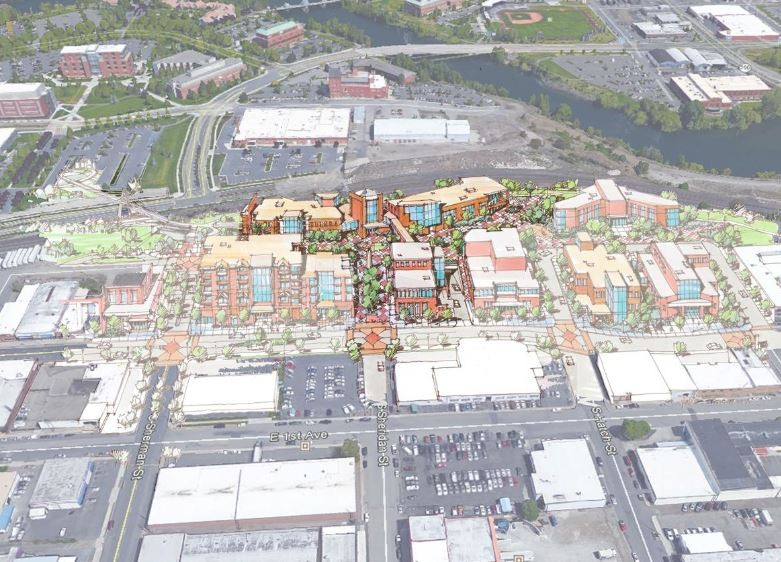Big Avista project across the railroad tracks from WSU Spokane would spur change in maligned neighborhood
Friday, March 3, 2017

(As reported in The Spokesman-Review by Treva Lind and Chad Sokol)
Plans are emerging for a major redevelopment project across the railroad tracks from the WSU Spokane campus.
Spearheaded by a subsidiary of Avista Corp., the project would be the first major bioscience hub on the south of the wide rail corridor that cuts through the city’s growing University District.
Called the Catalyst Project, the development would coincide with the upcoming construction of the $10.6 million University District Gateway Bridge. Some critics have panned the bridge as a waste of money that would connect the university only to a forlorn commercial district on East Sprague Avenue.
But if Avista has its way, the disparaged area soon will be the site of a six-story, 140,000-square-foot multi-use building filled with high-tech labs, offices, classrooms and study areas. The proposed building is the first of two phases of the Catalyst Project and would be situated on 5.5 acres at the south landing of the Gateway Bridge. A cost estimate for the project has not been disclosed.
Todd Mielke, the director of Greater Spokane Incorporated, said the building will be “a huge economic driver” and an integral part of the Riverpoint campus that matched the community’s long-term economic development plans.
Karl Otterstrom, chairman of the University District Development Association’s board of directors, added, “This is just another confirmation of those plans and visions and interests in investing in Spokane.”
Latisha Hill, Avista’s senior vice president of development, said the subsidiary is taking the role of preparing the land for development, but that project partners mainly will define uses for the first Catalyst Project structure.
“We’re really supportive of driving the business of health, and I would say supporting the University District and driving economic vitality for the area,” Hill said. “That will be the lens we’ll be using to evaluate the uses for that facility.”
But she and other officials declined to say who might use the building.
“We don’t want to reveal the partners yet because we’re in the early stages,” Hill said. “When we have more formalized plans, we’ll announce partners. I would love for that to occur before this summer.”
The timeline for the first phase of development ideally will run concurrently with construction of the pedestrian bridge, Hill said. “The bridge might beat us, but we want to make sure there will be some activity on the south side of the bridge.”
A second phase isn’t sketched in yet, she said. “We want to be open to opportunity, but the first phase will have a building. It will be exactly where the bridge lands on the south landing.”
WSU Spokane Chancellor Lisa Brown said she had participated in talks with the Avista team about the project. She said the university doesn’t immediately plan to use space in the Avista building, but “we’ll see what the trajectory is.”
“We’re supportive of development on the other side of the bridge and will probably grow into it at some point. I definitely anticipate that in time we will have a presence on the south side of the bridge as well,” Brown said. The Avista project “is really compatible with our medical school vision.”